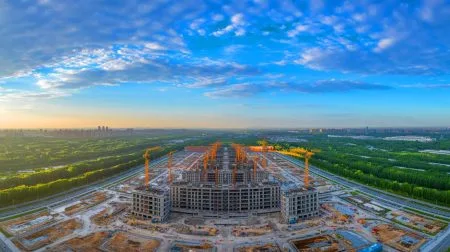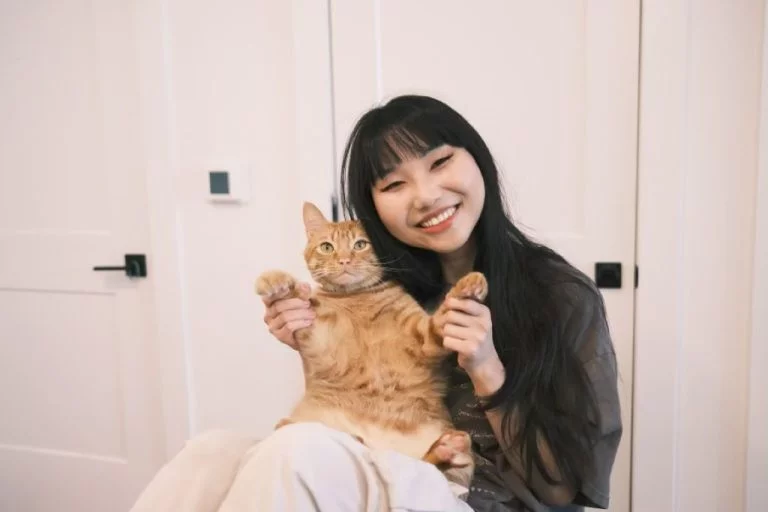| IN A NUTSHELL |
|
Article by Emily Gosling
In an era when international organizations are leaning on athletics as a bridge between cultures, the power of sport is taking center stage in unexpected arenas. Global initiatives increasingly champion sports diplomacy and youth programs as ways to foster unity and understanding – even the United Nations has proclaimed an International Day of Sport for Development and Peace, underscoring that “sport is not only inspiring, it is also a real tool for inclusion” that upholds children’s right to play. It’s against this backdrop that motion designer Xinxun Liao brings a fresh perspective: rather than on the field or in policy circles, she’s leveraging sports on the screen, using animation to amplify cross-cultural empowerment. Her latest animated project, created in partnership with UNICEF, transforms the ethos of global youth sports programs into a vibrant visual story – one that speaks to kids and adults alike, no matter where they’re from.
A vibrant still from Xinxun Liao’s UNICEF animation, which uses dynamic sports imagery to uplift and connect children globally. Liao’s recent motion piece for UNICEF is a kaleidoscope of color and energy that celebrates how play can empower. In this short film, sport becomes a visual language all its own. We see silhouettes of children kicking soccer balls and racing across abstract landscapes; swirling graphics of basketballs, track lanes and teamwork icons seamlessly morph into one another. The design is deliberately dynamic – a “interplay of color, movement, and texture” that captures the vitality of youth sports. The emotional tone is buoyant and hopeful: every scene seems to pulse with the optimistic spirit of childhood. Liao uses “sports elements to showcase the power of UNICEF to motivate, inspire, and connect communities around the world,” crafting visuals that reflect the charity’s mission of hope.
Watch the full animation: UNICEF Youth Empowerment Through Sport by Xinxun Liao:https://vimeo.com/639289177
The piece even functions as a tribute to the kids themselves – it celebrates their resilience and strength, portraying young athletes not just as players on a field but as symbols of unity and potential. In one moment, for example, animated children from different continents join an overlapping relay race, passing a baton that turns into a glowing UNICEF emblem. The message is clear without a single spoken word: through sports, youth everywhere can find common ground and confidence. The film’s art direction reinforces this theme at every turn, from its vibrant palette (think electric blues and energetic yellows) to its fluid transitions that suggest breaking boundaries. In the final frames, Liao leaves us with a heartfelt call to action in motion: a gentle reminder that uplifting children – on the pitch or through a screen – can help build “a more equitable and just world for every child”.
If Liao can communicate across cultures so effortlessly, it might be because her own story spans continents. She was born and raised in Shenzhen, a dynamic city in southern China known for innovation and creativity. As a child, Liao was enchanted by animation – she spent hours lost in hand-drawn cartoons and sketching her own characters. Early on, she discovered that moving images could convey feelings where words fell short. “Animation could speak when words failed,” she realized, an insight that stuck with her as she pondered how art transcends language. Determined to turn that childhood passion into a career, Liao pursued formal art studies in China, earning a BFA in Animation, before setting her sights abroad.
Her journey led to the Savannah College of Art and Design (SCAD) in the United States – a leap that would profoundly shape her perspective. At SCAD’s renowned Motion Media Design program, Liao spent years honing not only her technical skills but also her creative purpose. “At SCAD I found a community of creators from all over the world,” she has noted, emphasizing how exposure to diverse peers and ideas “opened my mind to new perspectives”. In the classrooms and studios of Savannah, this artist from Shenzhen learned to merge her Eastern and Western influences, and to always ask why she was creating something, not just how.
Central to Liao’s practice is a commitment to cultural sensitivity in visual storytelling. Having lived within two different cultural contexts, she is keenly aware that imagery and design can resonate – or misfire – depending on the audience. As a result, her work strives to be universally approachable. In projects like the UNICEF film, this means crafting scenes that any child could identify with, whether they’re in New York or Nairobi. There are no spoken narrations or on-screen text needing translation; instead, she lets universal symbols and emotions drive the narrative. This approach harkens back to Liao’s childhood revelation that visuals “transcend language”, conveying meaning without a single word.
For instance, a simple animated motif of children forming a circle or a relay team in her film instantly communicates unity and cooperation across cultures. Liao also researches the contexts behind her themes – be it learning disabilities or sports in developing communities – to ensure she represents them with accuracy and empathy. Importantly, she avoids one-size-fits-all clichés. In her youth empowerment animation, the kids depicted are diverse in appearance and environment, emphasizing that no one culture has a monopoly on play or hope. Every color choice and character action is made with inclusivity in mind. Liao’s sensitivity even extends to the pacing and tone of her animations: rather than bombarding viewers with spectacle, she prefers a gentle, inviting style that welcomes people in. It’s a style built on her belief that design should bridge and not alienate – a belief clearly reflected in the cross-cultural warmth that her work exudes.
Liao’s thoughtful ethos hasn’t just resulted in heartwarming animations – it’s also turning heads in the design world. She has amassed an impressive list of international accolades that validate her global relevance. Her thesis film on dyslexia, Unlocking Learning, swept multiple categories in three different design competitions, earning a remarkable triple Silver across the London, New York, and MUSE global awards. She followed that feat by clinching a Gold prize in the International Design Awards, one of the industry’s respected honors, for the same project. And it’s not only solo projects that are winning praise: at SCAD, Liao contributed to a collaborative motion piece that won a coveted Red Dot Design Award, the high-profile seal of excellence recognized worldwide. That project – an inventive nature-inspired title sequence for a student conference – even landed her team in the pages of Communication Arts, a leading design publication, as an exemplar of top student work. Such achievements are rare for a recent graduate, and they underscore the breadth of Liao’s talent.
Yet, despite the growing trophy collection, Liao remains refreshingly grounded. In interviews, she emphasizes that for her, awards matter less than the impact of the ideas behind the work. “It’s never been about collecting awards; it’s about starting conversations,” she has said, laughing off the notion of design for glory. Indeed, each honor in her portfolio has come from projects that carry a social message – from learning differences to child empowerment – and this is no coincidence. Liao intentionally aligns her creative output with causes she cares about. She belongs to a new generation of designers who see innovation and empathy as intertwined goals, and her success shows that the industry is taking note. As she looks ahead, Liao is eager to explore other intersections of design and social good, whether that means visualizing community stories or addressing mental health through motion graphics. In a design landscape often chasing the next cool aesthetic, her focus on substance and sensitivity stands out as both timely and timeless.
Xinxun Liao’s rise hints at something larger in the creative field. It illustrates how a designer can harness artistry for cross-cultural dialogue – using motion media to turn global ideals (like every child’s right to play) into emotionally resonant experiences. In a world that sometimes feels divided, Liao’s work is a persuasive reminder that visuals can unite and inspire. By animating the universal language of sport and infusing it with heart, she has carved out a niche as a cultural storyteller. And as viewers from all over watch a child on screen kick a ball and chase a dream, they’re likely to feel the spark of connection that Liao so passionately seeks to create. In her hands, design becomes its own form of diplomacy – one where creativity, compassion, and culture move in harmony, frame by frame.
Did you like it? 4.6/5 (27)








Wow, Xinxun Liao’s work sounds incredible! How can I watch her UNICEF animation? 🎥
What a journey! From Shenzhen to international acclaim – truly inspiring. 🌏
The idea of using animation for sports diplomacy is fascinating. Does Liao have any plans for future projects?
This article really makes me appreciate the power of visual storytelling. Thank you for sharing!
I’m curious about how Liao’s Eastern and Western influences blend in her work. Can anyone point me to more examples?